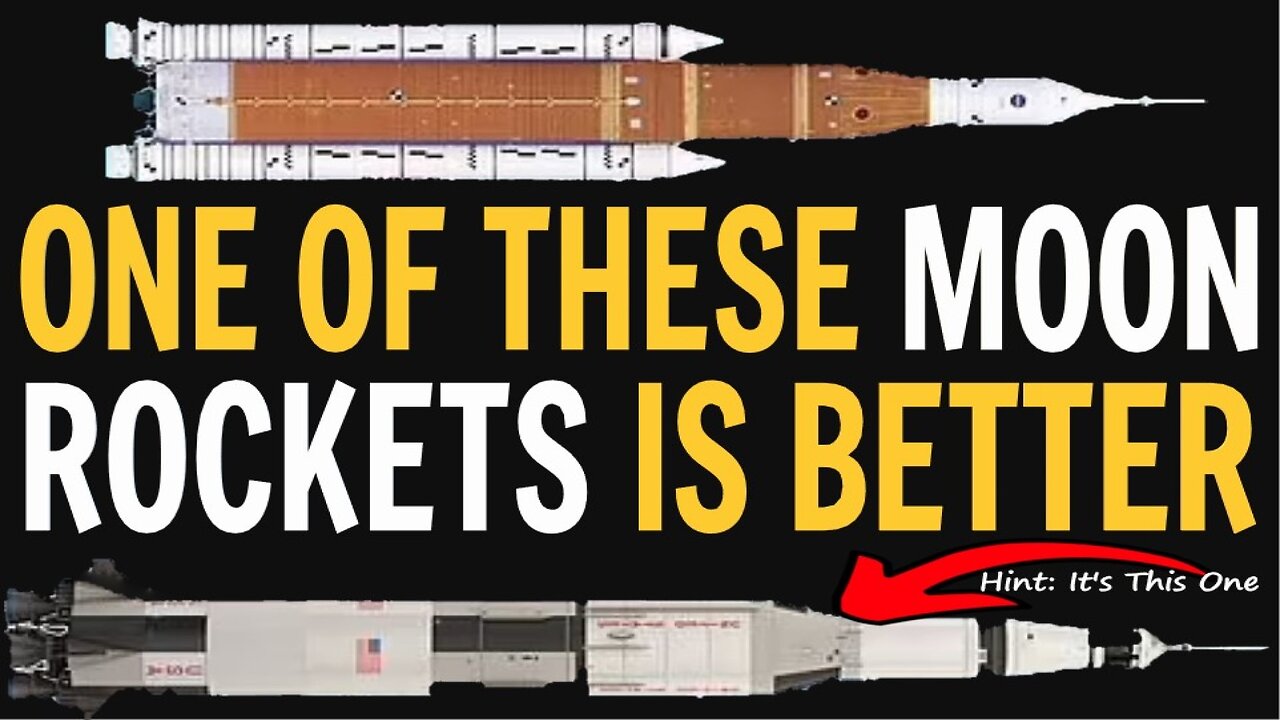Premium Only Content

NASA’s Lunar Legacy: A Comparative Analysis of the Saturn V and Space Launch System SLS Moon Rockets
Please Support The Channel
50% of all channel support (after fees & tax) will go to a private Moon mission
Patreon: https://www.patreon.com/user?u=37594401
Buy Me A Coffee?: https://www.buymeacoffee.com/whats.next
Donate With Cash App: https://cash.app/$YTpayments
In this captivating YouTube short, we will delve into NASA’s rich history of lunar exploration by comparing and contrasting the awe-inspiring Saturn V moon rocket and its successor, the Space Launch System (SLS). Both rockets represent monumental achievements in human spaceflight, with the Saturn V paving the way for the United States’ first manned lunar landing in 1969, and the SLS poised to carry us back to the Moon as part of NASA’s Artemis program.
Saturn V: The Saturn V rocket, developed during the 1960s as part of President John F. Kennedy’s ambitious goal to land a man on the Moon before the end of that decade, was an engineering marvel. Standing at an impressive height of 363 feet (109.7 meters), it was the tallest, heaviest, and most powerful rocket ever built at that time. The Saturn V consisted of a central third stage (S-IVB), three liquid-fueled first stages (S-IC), and an Apollo spacecraft on top. This colossal machine generated a staggering 7.5 million pounds (34 MN) of thrust at liftoff, propelling astronauts to escape Earth’s gravity and embark on their historic journey to our celestial neighbor.
Space Launch System (SLS): Fast forward to present day, NASA has initiated development of its next giant leap in lunar exploration: the Space Launch System (SLS). Designed to be even more powerful than its predecessor, this heavy-lift launch vehicle is expected to generate a mind-boggling 8.8 million pounds (39.8 MN) of thrust at liftoff when using its five RS-25 engines in their upgraded configuration. The SLS is also taller than the Saturn V, measuring 322 feet (98 meters) in height when fully assembled with its Orion spacecraft on top. This new powerhouse will play a crucial role in carrying humans back to the Moon under NASA’s Artemis program and eventually pave the way for missions beyond our solar system.
Comparative Analysis: Although both rockets share some similarities such as their heavy-lift capabilities and their role in advancing human spaceflight, there are significant differences between them that make each one unique in its own right. For instance, while both use liquid hydrogen and liquid oxygen as fuel components, improvements in engine technology have led to increased efficiency for the SLS compared to its predecessor. Additionally, advancements in materials science have resulted in lighter structures for various components within the SLS design – making it more fuel efficient overall despite being larger than its predecessor. Furthermore, while both rockets were designed for manned missions to orbit or beyond Earth’s atmosphere, only the SLS is currently being developed with lunar exploration specifically in mind due to its immense power capabilities required for deep space missions involving large payloads or extended stays away from Earth.
-
 1:40:36
1:40:36
The Quartering
2 hours agoKimmel Pulls Show Mysteriously, Youtube Collapse? & Much MOre
33.6K19 -
 LIVE
LIVE
The Robert Scott Bell Show
2 hours agoLive From CHD Austin Texas, Kids Triple Vaccinated, Blood Sugar and Autism, Candy Fed to Cows, Nutrition Reform - The RSB Show 11-7-25
145 watching -
 1:15:58
1:15:58
DeVory Darkins
2 hours agoLIVE NOW: Democrats SABOTAGE GOP effort to reopen Government
74.8K43 -
 1:21:21
1:21:21
Tucker Carlson
2 hours agoThe Global War on Christianity Just Got a Whole Lot Worse, and Ted Cruz Doesn’t Care
24.3K118 -
 10:50
10:50
Dr. Nick Zyrowski
2 days agoDoctors Got It Wrong! This LOWERS CORTISOL In Minutes!
2.97K2 -
 24:14
24:14
Verified Investing
2 days agoBiggest Trade As AI Bubble Begins To Burst, Bitcoin Flushes Through 100K And Gold Set To Fall
1.7K -
 1:12:28
1:12:28
Sean Unpaved
2 hours agoAB's Dubai Drama: Extradited & Exposed + NFL Week 10 Locks & CFB Week 11 Upsets
10.7K -
 2:06:08
2:06:08
The Culture War with Tim Pool
4 hours agoDemocrats Elect Man Who Wants To Kill Conservatives, Time For An Exorcism | The Culture War Podcast
109K91 -
 1:36:52
1:36:52
Steven Crowder
5 hours agoMamdani's Anti-White Victory Must Be America's Wake Up Call
273K309 -
 2:18:38
2:18:38
Side Scrollers Podcast
4 hours agoGTA 6 GETS WRECKED AFTER ANOTHER DELAY + India THREATENS YouTuber Over Video + More | Side Scrollers
20.9K3